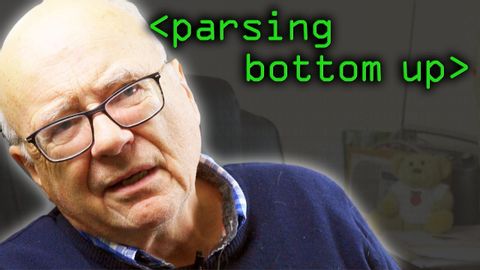自下而上的解析 - Computerphile (Parsing Bottom Up - Computerphile)
 沒有此條件下的單字
沒有此條件下的單字- n.慣用語;樂句;用話表示;用短語描述;用語言表達:;片語
- v.t./i.措辭
US /ˈrek.əɡ.naɪz/
・
UK /ˈrek.əɡ.naɪz/
- v.t.認可;接受;賞識;承認;表彰;嘉獎;認出,認識
US /ˈbesɪkəli,-kli/
・
UK /ˈbeɪsɪkli/
- n.地點,處所;處於困境,陷入困境;點;少量,少許;斑點,污漬
- v.t.認出,發現

